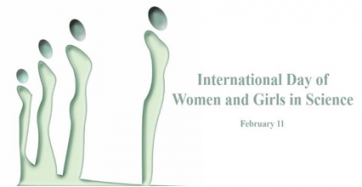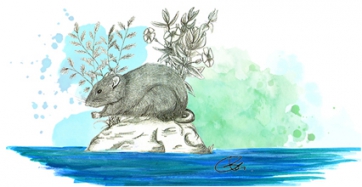ICP News
On the occasion of International Women's and Girl's Day in Science, which is celebrated on February 11, the women working at the Institut Català de Paleontologia Miquel Crusafont (ICP) explain their jobs.
The Institut Català de Paleontologia Miquel Crusafont (ICP) participates in a European Training Network (PUSHH) led by the University of Copenhagen (Denmark) that aims to provide international doctoral training to study the evolution of the human lineage through the analysis of ancient proteins from tooth enamel.
The navicular bone of Anchomomys provides new clues about its locomotion behavior
23 Jan 2020
835 times
A research team from the Institut Català de Paleontologia Miquel Crusafont (ICP) analyzes the navicular bone of the small primate Anchomomys frontanyensis, a species described in Sant Jaume de Frontanyà (Berguedà, Catalunya) in 2011. The morphology of this fossil remains suggest that this species would be more agile than other…
The director of the Institut de Biologia Evolutiva (IBE, CISC-UPF), ICREA research professor and associate researcher at the Institut Català de Paleontologia Miquel Crusafont (ICP) has obtained a Consolidator Grant from the European Research Council (ERC). The researcher will receive a grant of 1.896.875 euros to carry out, over five…
An international team of paleontologists including Borja Holgado and Fabio M. Dalla Vecchia, associate researchers at the Institut Català de Paleontologia Miquel Crusafont (ICP), has described a new genus and species of pterosaur, Mimodactylus libanensis. It is based on the most complete skeleton of these extinct animals ever discovered from…
The life history of Miocene equids subject of a new doctoral dissertation at the ICP
21 Nov 2019
754 times
Guillem Orlandi, researcher at the Evolutionary Paleobiology group of the Institut Català de Paleontologia Miquel Crusafont (ICP), achieved an excelent for his doctoral dissertation to get his doctorate in biology from the Universitat Autònoma de Barcelona. Orlandi has focused his work on the life history of the hipparionins, a group…
The new genus and species Aquilarhinus palimentus, or ‘shovel-chinned eagle nose’, is a primitive duck-billed dinosaur that lived 80 million years ago. This dinosaur has been named for its aquiline nose and wide lower jaw, shaped like two trowels laid side by side. The skull is very complete and was…
An international team led by Borja Holgado, associate researcher at the Institut Català de Paleontologia Miquel Crusafont (ICP) in collaboration with Aragosaurus-IUCA research group from the Universidad de Zaragoza, has described a new species of flying reptile, Iberodactylus andreui. It is a 4 m wingspan piscivorous pterosaur which lived in…
Researchers from the Universitat Autònoma de Barcelona and the Institut Català de Paleontologia Miquel Crusafont have evaluated the body size evolution of Mikrotia magna, a giant rat which dwelled in the paleoisland of Gargano during Late Miocene. The results show a clear increase of body size through its insular evolution.…
The Basturs Poble site (Pallars Jussà, Lleida) is the most important site in Europe when it comes to hadrosaur remains. The site has yielded over 1000 fossils, all probably pertaining to the same species. Now, the journal PLOS ONE publishes the most complete study of fossils recovered from the site…
















